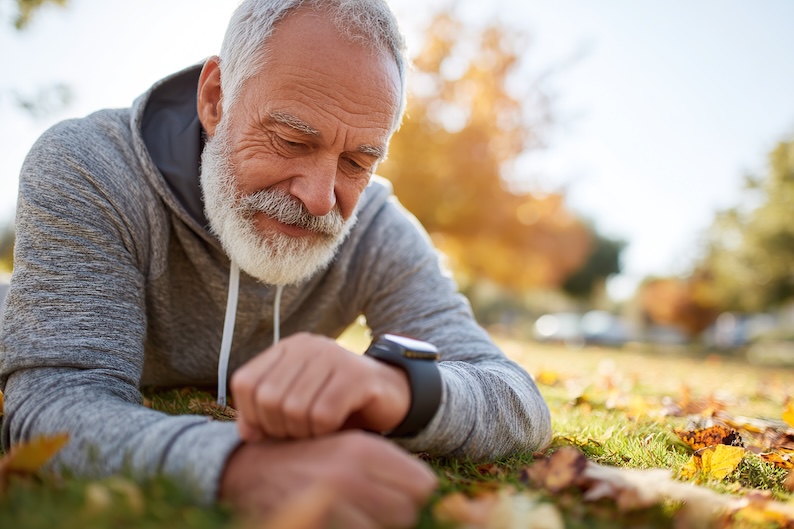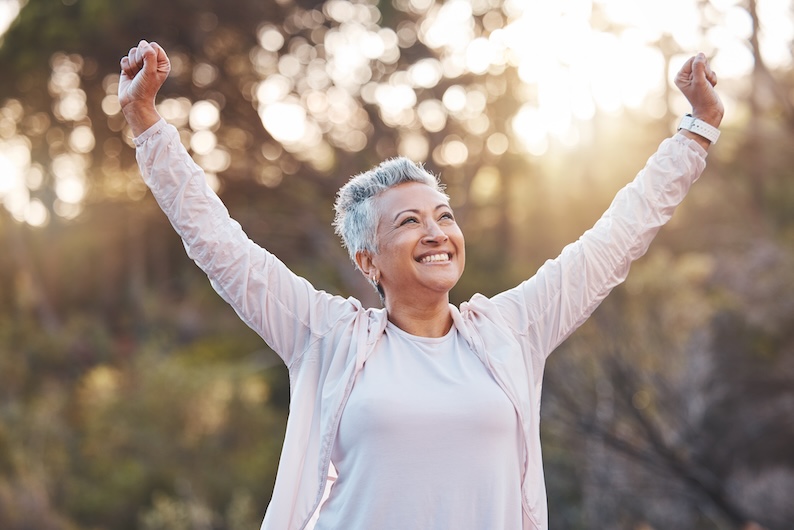About 1 out of 3 older adults falls each year, according to the National Institute on Aging. With accidents like that possibly causing broken bones or other major injuries, it's important to know some fall safety tips to help keep yourself safe.
The best way to implement a strategy that works for you is to understand the risk factors and causes of many falls. Let's take a look some things that cause falls and how to lower your risk of falling.
Fall Risk Factors and Causes
One of the most common culprits of falls in older adults is a decline in physical fitness. It's common to become less active as you age, so many adults will experience a decrease in muscle strength, loss of bone mass, and decreased balance and flexibility.
Certain medications can also contribute to falls. Many can have side effects like dizziness, drowsiness, and low blood pressure. Combinations of some medicines can also cause the same effect. If you take multiple medications every day, you should speak with your doctor about the possibility of them interacting in a way that could lead to increased fall risk.
Many older adults live with chronic diseases that can contribute to falls. Poor physical health or cognitive impairment caused by things like Parkinson's disease or Alzheimer's disease can leave patients with weak extremities, balance issues, or confused with their surroundings.
When you add in factors such as impaired vision, clutter around the home, loose carpets or rugs, and slick floors, you can see why fall prevention should be top of mind for those 65 and older.
Fall Safety Tips
Having a fear of falling is fairly common with older adults, but don't let it keep you from living an active and fulfilling lifestyle. Use these fall prevention strategies to help keep you in good condition
Remove Hazards In The Home
One of your first steps should be to do an assessment of your home. You want to remove anything that could be a tripping hazard.
Look for any kind of clutter you may have laying around. That would be things like magazines or newspapers, extension cords, boxes, or other things that are in walkways.
Moving tables or other furniture in high traffic areas is the next step. Any furniture you need to maneuver around to make your way through the home is something that could cause you to fall. You should take them out or move them into a less-traveled part of the house.
Assess Your Lifestyle
A lot of your risk can be negated just by making some changes to your lifestyle. For example, staying physically active can help improve your strength, balance, and coordination. Doing some simple exercises or even just getting up and walking throughout the day can go a long way.
Skipping out on physical activity because you're scared of falling can actually make the problem worse. Talk to your doctor to come up with exercise programs that can both help you improve your physical attributes and ease your mind when it comes to fall risk.
You should also limit the amount of alcohol you drink. Even a little bit can impair your balance and reflexes.
Lastly, simply changing your footwear can help, too. You should wear non-skid, rubber-soled shoes with a low heel or a non-skid shoe that laces up and fully supports your feet.
Optimize Your Home
Keeping your home brightly lit can help prevent falls. Making them brighter can help you clearly see any potential hazards.
Start by adding lamps or putting brighter bulbs in existing lamps where you have any dim spots. Make sure you have a clear path to the light switches in every room of your home.
Additionally, put night lights in your bedroom, the bathrooms, and the hallways. You should have a flashlight in a quickly accessible location in case you experience a power outage.
Check all of your emergency devices to make sure they are in working order. Your fire extinguisher, smoke alarms, and carbon monoxide detectors should be functioning properly so you don't have to scramble around in the event they're needed.
The outside of your home needs to be taken into account, as well. Watch for wet spots if it has been raining. Keep outdoor walkways clear of fallen leaves in the fall and ice-free in the winter.
Use An Assistive Device
If you have balance issues you should look into an assistive device such as a cane or walker. When used properly, these devices can help you keep your balance, provide assistance in traversing stairs, and give you some added security for maneuvering around any obstacles.
Aside from a cane or walker, you should also add grab bars to your shower or bathtub, along with added a non-slip grip to the shower floor.
Talk To Your Doctor
The most important thing for you to do is to talk to your doctor about fall prevention programs and discuss anything that could contribute to a fall.
This is another reason why it's so important for your provider to be kept updated on every medication you're taking. Your physician can determine if any of those medications could interact negatively and affect your balance or thinking, such as making you dizzy or tired.
Your doctor will also be able to talk about any health conditions you may be dealing with and whether or not they could increase your fall risk.
Also, let them know if you have fallen before and all of the details that led up to that fall. Talking about times you almost fell down can help reduce falls in the future.




